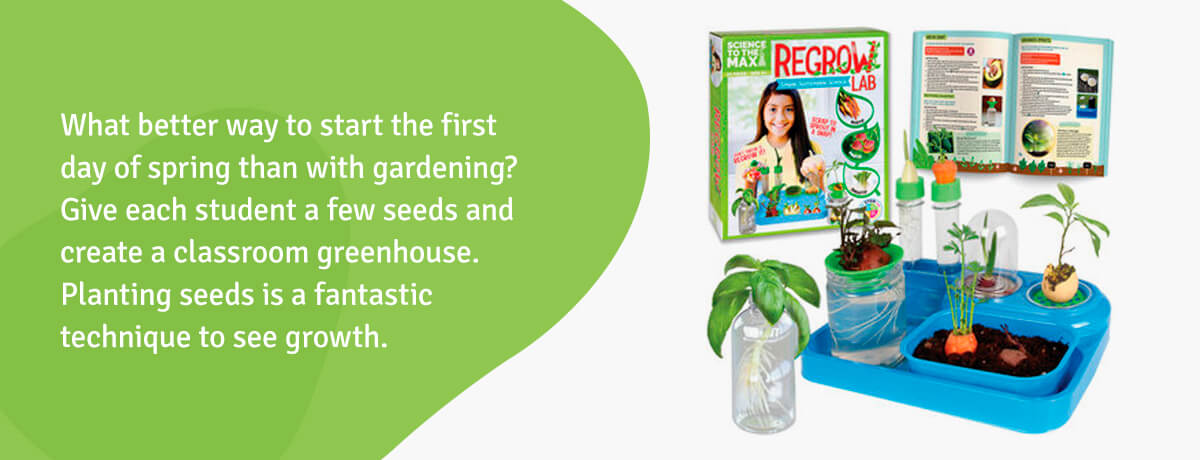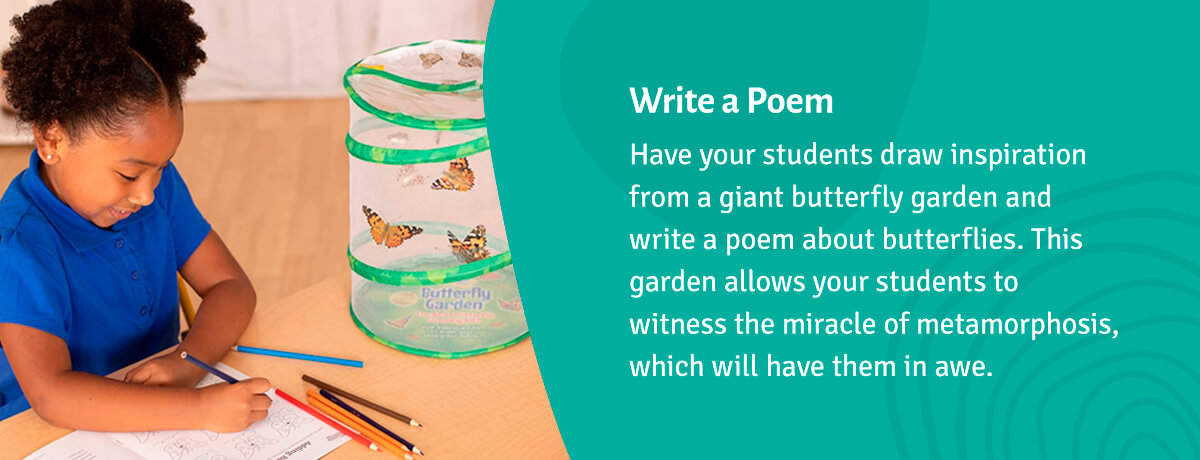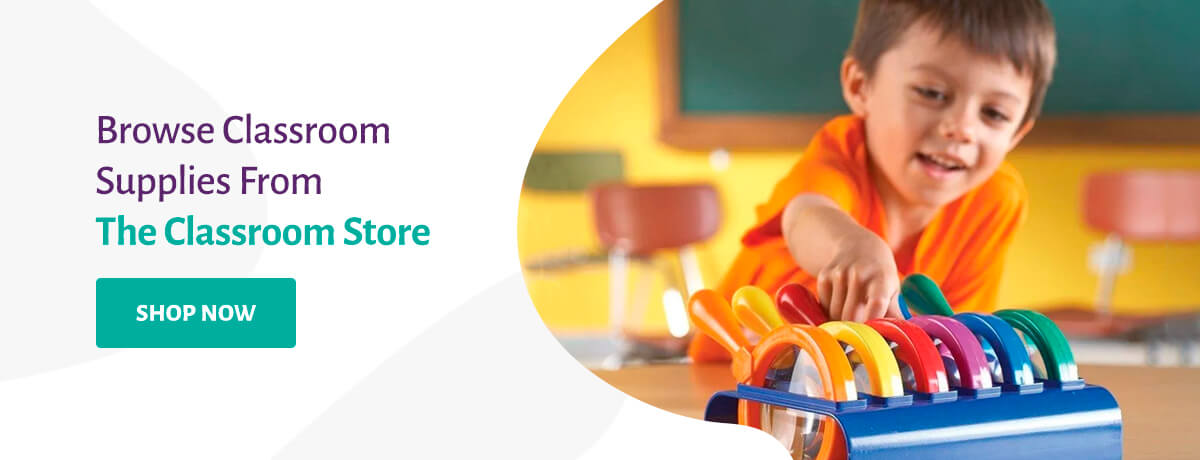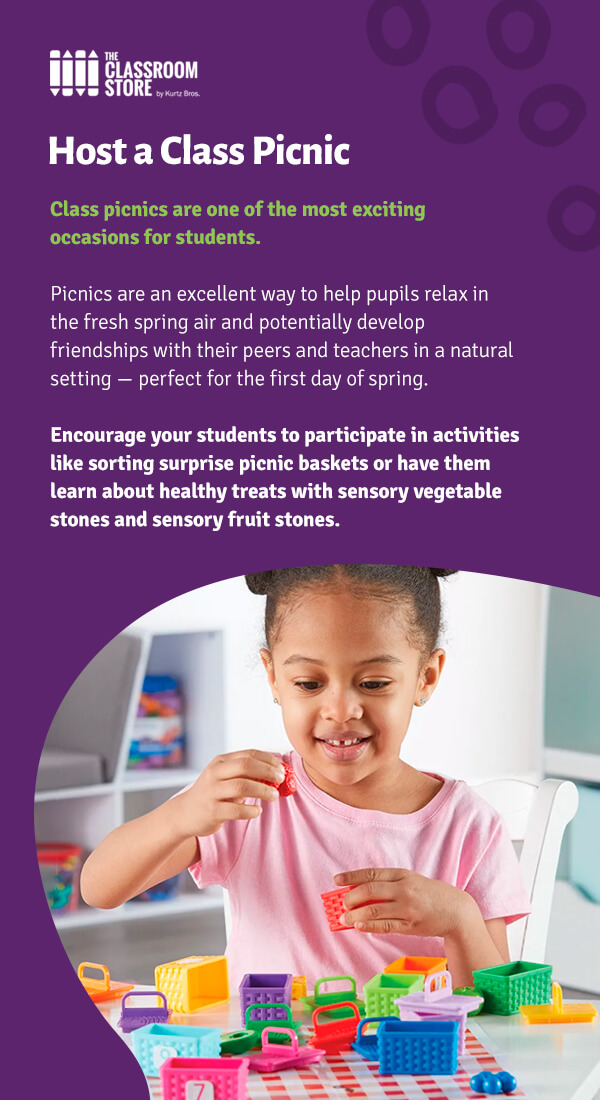16 First Day of Spring Classroom Ideas

Spring is a time of rebirth and new beginnings. It’s a time to celebrate the arrival of new life and the coming warm weather. This also means it’s time to start thinking about the first day of spring classroom ideas. It can be challenging to come up with new and fun first day of spring activities to keep your pupils engaged — after all, it is still winter! Get your creativity flowing with these 16 first day of spring classroom ideas for elementary students.
First Day of Spring Activities for Elementary School Students
These activities will get your students excited for the new season and help them transition from winter to spring in a fun and memorable way. Whether you’re looking for ideas for a science project or something to do during free time, these activities are sure to get your students buzzing!
1. Learn About Weather Science
As the weather becomes warmer and everything feels fresher, introduce your students to the changing seasons and weather with a lab-in-a-bag. Allow students to explore the science behind weather with this fun kit.
Go outside and have them see what causes different weather patterns with numerous activities. This kit includes tools like a thermometer, anemometer, tornado tube, weather vane, instant snow powder and a weather journal to help kids learn about forecasting.
Encourage kids to record the weather in their weather journals, which can help them learn about counting, math, days of the week, months of the year, tracking, graphing and sorting. This activity also teaches kids responsibility by requiring them to complete their daily weather-tracking duty.
You can further decorate your classroom with a calendar weather pocket chart to help engage your pupils in learning about the seasons and the changing weather with illustrations.
2. Explore the Life Cycles
Many life cycles in nature restart in the spring. We know that plants and animals reproduce in a variety of ways, and we also know that there are several ways to grow up. Explore the life cycles of plants, insects and animals with life cycle rummy, life cycle figurines or life cycle magnets.
Rummy is a quick and simple sequence-based card game for testing and reinforcing life cycles and the life-like figures help children comprehend the life cycles of insects and frogs. You can mix the figurine pieces together, challenge your students to sort by life cycle and arrange each cycle in the right sequence.
 3. Grow a Garden
3. Grow a Garden
What better way to start the first day of spring than with gardening? Give each student a few seeds and create a classroom greenhouse. Planting seeds is a fantastic technique to see growth. As time passes, the class can keep track of the plant’s progress to look back on once it is fully grown. This way, you’ll be able to discuss the different phases of a plant’s development or how long it takes certain plants to grow.
Your students will be delighted with the result as they witness how their planted seeds start to grow and blossom into something new. You can also encourage the kids to re-grow plants with a re-grow science kit instead of throwing kitchen scraps away. Growing a garden will provide kids with a hobby while also doing something good for the environment.
4. Create Colorful Bookmarks
The first day of spring calls for color! Have your students start their first day with an arts and crafts activity by creating colorful spring bookmarks. So get your crayons, colored pencils, glitter and glue ready! Your pupils will have a great time constructing their own mini-masterpieces. Make a hole on the top and thread a tassel or yarn loop through it. Throughout the spring days, your students can use their own bookmarks to track their progress in books.
Combine this activity with reading objectives for the new season. Encourage everyone to set a goal for how many books they’d like to read in the spring, and have them track what they’ve read in creative ways on their bookmarks. They can color in an Easter egg or add petals to a blossom for every book they finish.
5. Make Tissue Flowers
The last day of winter makes way for new flowers to bloom and bring color to the beginning of the spring equinox. Inspire your pupils by making textured tissue flowers with a tissue flower kit. This easy activity involves crumpling up tiny pieces of tissue paper to make big, brightly colored flowers.
Allow your pupils to be creative and encourage them to make one large flower, a bunch of little blossoms or anything their minds can conjure up. Make sure you provide a wide range of colors for students to pick from and give extra fun materials such as glitter or pom-poms for caterpillar pals to create added excitement.
Take it a step further and add thickness and depth to backgrounds, walls and table decorations with paper flowers to create a real springtime ambiance.
6. Build and Fly Kites
Springtime brings mild breezes and bright days, ideal conditions for kite flying. To stay on the springtime theme, try flying bird kites to create the illusion that there are real birds in the sky, migrating back to a warmer area. There are several compelling reasons to fly a kite with your students, including social, physical and educational benefits.
Kiting is a fun and energetic outdoor activity for kids that is typically inexpensive. Flying a kite also gives kids a workout as they hop and run around with it. Building and flying kites will definitely make for a happy first day of spring.
 7. Write a Poem
7. Write a Poem
Have your students draw inspiration from a giant butterfly garden and write a poem about butterflies. This garden allows your students to witness the miracle of metamorphosis, which will have them in awe. Adult butterflies are beautiful and their life cycle is also intriguing for young students, serving as inspiration for their writing.
A great poem can help young children make reading entertaining. Poetry is a beneficial component of every young child’s reading journey — from making reading joyful to teaching youngsters alternative ways to think about sounds.
8. Learn Some Math
To throw math into the mix, have your students learn more about math fundamentals. Help your pupils navigate the new math with comprehensive lessons. The exercises are ideal for kids who are unsure about arithmetic and early finishers! This skills-based and standards-aligned set of arithmetic exercises provides a fun approach to reviewing essential math concepts.
Add an Easter twist to math lessons with color match eggs that come apart to reveal matching halves, making them an excellent tool for learning to count, number recognition and color matching.
9. Prepare for Earth Day
In preparation for Earth Day in April, teach principles about spring, nature and environmental protection. Use bright, informative books to demonstrate the necessity of keeping our planet happy and healthy. Plant a seed with the students to reinforce your plant growth teachings. Alternatively, urge kids to talk about the small things they can do to help protect the environment, such as recycling common household goods.
10. Do Spring Cleaning
Cleaning doesn’t have to be a difficult task! Put their spring cleaning abilities to the test by having them design a clean-up poster that includes all the procedures they take to clean their bedrooms, desks or any other personal area. They can use the poster as a motivational tool in the classroom or at home.
With the end of the school year approaching, the first day of spring is a great time for students to declutter their desks and reflect on what they’ve learned this year. Students can put all their worksheets and assignments in binders to keep materials organized.
11. Examine Seeds, Soil and Plants
Examine the seeds, soil, plants and flowers outside. Some seeds, such as those of the mustard plant, are as little as the tip of a pen. Other seeds, such as those of a bean plant, can be as huge as a coin! Mesmerize your students with the variety of sizes, shapes and colors of seeds.
Spring is when many plants and trees produce seeds — dandelions are among the earliest plants to show theirs. Their fluffy circular seed heads are simple to identify, and youngsters like blowing the seed pods. Make a wish!
Remember to examine the soil, too. Have your pupils take a peek at what’s under their feet. Soil occurs in various textures, including sandy, loamy, chalky, clay and silty. Even organisms can be found in the dirt. Have their jumbo magnifiers and nature diaries close by so students can record everything intriguing they find!
Additionally, tulips, crocus and daffodils are abundant this time of year. Why not dissect a flower to investigate the inner workings of the pistil, stigma, ovule and stamens? You can use a cross-section flower model as a demonstration.
12. Study Insects and Bugs
In the spring, bugs are everywhere. Nonfiction books might help your pupils learn more about the insects and creatures they’re interested in. Fiction novels that provide a bug’s point of view can also assist your students in learning about biology in an exciting and unique way. Additionally, you can make a jar filled with spaghetti or vermicelli “worms” and ask the kids to guess how many are inside for a fun counting project.
You can also opt to show your pupils an ant mountain. Allow them to observe a colony of Harvester Ants burrowing underground to build an incredible network of subterranean tunnels, walkways and secret chambers. Observe how these hardworking insects work together to tunnel, explore and feed in their habitat.
13. Host a Class Picnic
Class picnics are one of the most exciting occasions for students. Picnics are an excellent way to help pupils relax in the fresh spring air and potentially develop friendships with their peers and teachers in a natural setting — perfect for the first day of spring. Encourage your students to participate in activities like sorting surprise picnic baskets or have them learn about healthy treats with sensory vegetable stones and sensory fruit stones.
14. Learn About Animals
Help your pupils understand and recognize the wonders of their favorite animals with soft and cuddly animal puppet sets to expand their creativity, critical thinking, curiosity and collaboration. You can also use animal STEM activities that cover topics like animal babies, habitats and the weather.
These activities spark questions from pupils and serve as excellent triggers for fact-recording exercises. During these exercises, students record the most intriguing information they discover about a certain animal as they participate in each activity.
15. Go on a Nature Walk
Take the students on a tour around the playground to learn about nature. Ask them to use their senses to notice the sights, sounds, scents and sensations of the air and environment around them. When you return to class, have students hone in on their creativity and writing skills to compose a descriptive poem or story about their nature walk experience on a picture story newsprint.
16. Draw Spring
How does spring look for each of your students? Gather blank papers and art materials and allow their imaginations to run wild. Teach younger pupils how to draw simple flowers, bees and the sun. Older kids can learn how to draw birds, frogs and other animals typically associated with spring. Art is a vital topic that may assist kids in developing a variety of key abilities, such as creativity, cooperation and sustained attention.
 Browse Classroom Supplies From The Classroom Store
Browse Classroom Supplies From The Classroom Store
Spring learning is vital because it is the perfect time of year to re-engage those sleepy winter brains, review critical skills from previous months and prepare our young learners to end the school year strong! With these first day of spring classroom ideas, you and your pupils are sure to have a happy first day of spring.
Do you want to make your classroom a pleasant and exciting learning environment this spring? Decorate your room with fun, colorful, functional, educational and motivational decorations and resources. Your classroom transformation for spring may boost student engagement.
Choose The Classroom Store if you want variety and value in your classroom decor. We provide a large assortment of resources, decoration sets and individual pieces. From student awards and incentives to name plates, bulletin boards and other classroom decor, we have everything you need to bring your classroom ideas to life. Shop online now or contact us with any questions.


